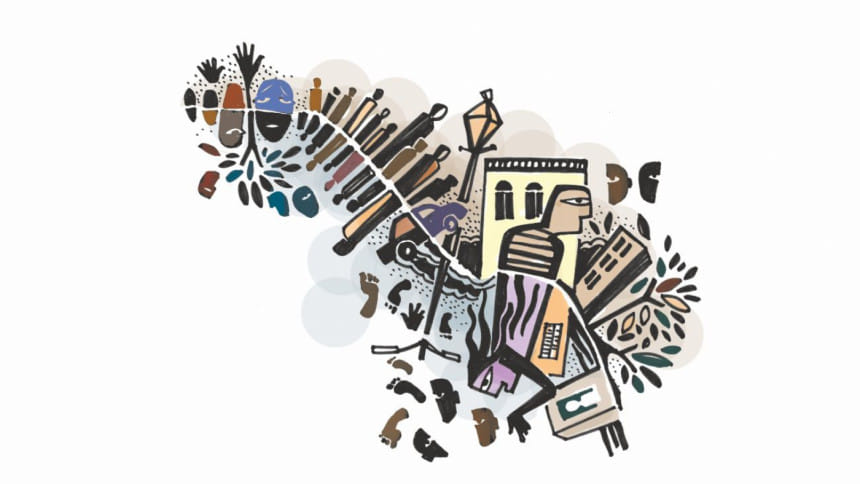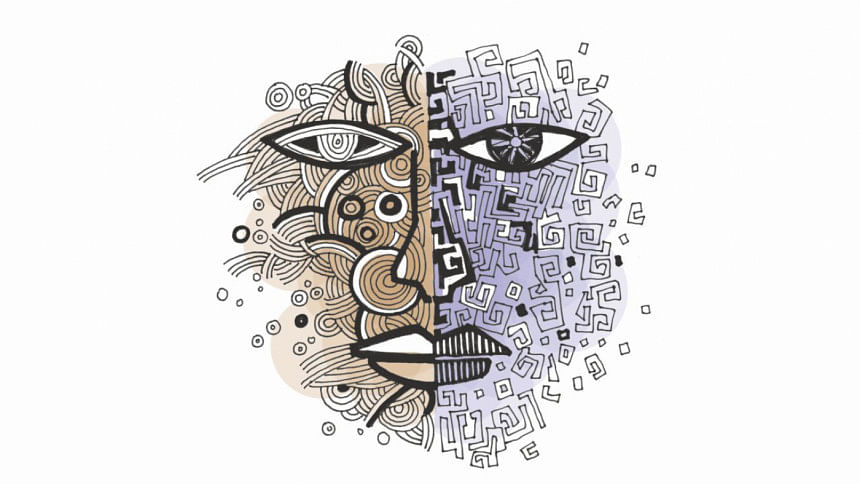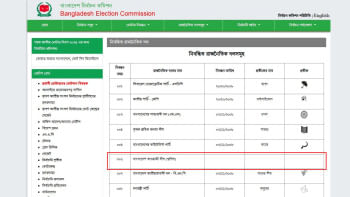The Imagined Bengal - When the City Goes Soft

Whenever people talk about the greater Bengal, divided in two halves—West Bengal, consisting of 18 districts of India, and East Bengal, which is now Bangladesh—the linguistic commonality along with what many term as 'Bengaliness' creates a myth of cultural affinity and a networked relationship maintained across the national divide. On the other hand, being nationally divided, the tangible connection between the two parts has become tenuous, and knowledge of each other, politically entangled and mediated by fantasy and fear.
This duality is intriguing and it raises fundamental questions about place making: How does one imagine a place? A place that doesn't exist on a map? A place with no geographic correlate yet whose imaginary is so full of physical and locational details, as if it really does? Maybe the answers lie in the very contours of the imagined Bengal itself, which I shall try to trace next.
But before I do so, let me add a necessary aside. Unless otherwise stated, what I'm going to write next is based on conversations I had with Bengalis from Dhaka and Kolkata in a transnational space a few years ago for a research project.
The conversations constantly hinted at a pattern of mutual troping involving the two giant cities—Dhaka and Kolkata—that I shall be using as shorthand for the two halves of Bengal here.
Kolkata and Dhaka: the soft city
The most constant element in the social imaginary of two Bengals is a river that never was. The two Bengals are very often referred to as Epar Bangla and Opar Bangla—meaning this and that bank of a river—by Bengalis from both sides. In both evocations the other Bengal remains the Opar Bangla. It's hardly surprising that when talking about Dhaka or Kolkata, many Bengalis without any ancestral ties or direct partition hangover tend to think of an intimacy in terms of geographical and cultural proximity, as aptly put by a Bangladeshi Bengali, "just like, the other bank of a river, you know, how different can it be?" The imaginary river more than dividing, ironically helps connect the two distinct banks as intimate and organic halves.
The knowledge that one can read the road signs, hum along the tunes of songs one hears on a local radio, ask a stranger for direction to a place in one's native tongue restricts Bengalis from thinking of the opar in terms of an alien land, leading to a supposed intimacy with the unseen. But the border is too solid a reminder of the foreignness as ethnic or cultural solidarity is never enough to get a visa. Hence, despite all the spirit of anticipation Kolkata retains the foreignness about it with all its complexities that become explicit in the following ways.
Kolkata: the all too familiar foreign land
Very often it is the catastrophes and atrocities that offer the nearest, firmest grip over the imagined city for some Bengalis whose families were directly affected by the partition. Having heard about the partition narratives from elders and other sources—history books, newspaper reports—this group tries to find a resonance of their personal loss and suffering in what they imagine.
The banal discourse of 'us' and 'them' appears in all its might as some Bengalis from both sides bear in their mind a city made only of difference. They catalogue obvious dissimilarities in all shapes and forms ranging from the distinctive dialect unique to each Bengal to a generalised essentialist antagonism such as Hindu vs Muslim, Ghoti vs Bangal, minority vs majority to name a few. In short, this other Bengal that Bengalis imagine into being is a stereotypical 'other' that is always seen as different, alien and found lacking compared to one's own half.
Interestingly, when I discussed with people at home about a research I would be conducting in Kolkata, I noticed gestures of unease on many of my friends' and family's faces. They were concerned for my safety as a Bangladeshi Muslim woman in an 'alien city.' Even though many among them frequent Kolkata regularly, they prefer to retain that touristic distance from the city as if they are afraid of intimacy with the 'other'. Surprisingly enough, the cause for their unease turned out to be not with Kolkata's predominant alien (Hindu) population but its uncanny similarity with my very own city and desh (home land) which is never safe enough for living, for health care, for travels etc to many natives.

Kolkata, despite its visa requirement and active political border, remains 'home-like' and never foreign enough for Bangladeshi Bengalis. The social imaginary of Kolkata does not include either the lure of security, opportunities, amenities or the common fascination for the adventure into the unknown which comes with many foreign lands. Bengalis on this side are rather apprehensive of being subjected to similar kind of uncertainty and disorderliness on the go. Moreover, the ubiquitous presence of a similarly dispositioned people like themselves—judgmental and nosy Bengalis—reinforces the sameness. It is in such rare moments that the border is rendered pellucid, as described in the powerful words of Amitav Ghosh: "[A] moment when each city was the inverted image of the other, locked into an irreversible symmetry by the line that was to set us free—our looking-glass border."
Contrary to this uncanny closeness, there are positive detachments, steadily maintained by a large group of Bangladeshi Bengalis making regular trips to the city for medical purposes, which reinstates Kolkata's foreignness. A disbelief in the medical system of Bangladesh makes affluent patients seek medical help outside the border. Those who cannot afford to go to the more developed East Asian cities like Singapore or Bangkok, prefer Kolkata with the relief that at least it is not done in their homeland. It is assumed that the treatment done outside the border entails advanced skill level, efficiency and less negligence. And Kolkata's foreignness is restored with all its might.
This kind of subterranean, unconscious ruptures and ties marginalise the allegedly immutable partition discourse and its divided legacy in our daily lives. However, these rare glimpses do not negate the possibility of the lingering effect of political division completely as it continues to shape our perception towards the other as the next account of soft Dhaka reveals.
Dhaka: the home that was
There is another possible version of the other city as conjured up by the majority of displaced Bengalis, which can best be termed a jaundiced city, yellowish in hue, due to the fixity and sterility of the vision. Difference is important in such place-making too, but difference is called forth more as reference points than as signs of antagonism. This is a Dhaka imagined and shelved with care like bone china porcelain wrapped in soft cloth to prevent disfiguration.
The adverse economic and social position in which many displaced Bengalis found themselves after partition made them hark back to the pre-partition East Bengal as almost empyrean, and in Ashis Nandy's words, as a space "uncontaminated by religious hatred and, as such, also has to be remembered as a place where water was sweeter, vegetables greener, and milk purer." Hence, the narrative of loss, of the home that was, is most common among West Bengalis who either have personal memory of the partition or have inherited these memories from elders in the family.
East Bengalis with regular interaction with West Bengalis, however, show signs of annoyance at this nagging reiteration of how "they owned all of East Bengal once" rendering a mythic status to their claim. Thus, the city—be it Dhaka or Kolkata—when rendered soft becomes an elastic entity that expands and contracts as the waves of memory, nostalgia and other affective affiliations flow in and out. Sometimes the vision is ridden with all kinds of prejudices, sometimes it's romanticised or idealised but one cannot say that only one aspect of the imagined Bengal is more legitimate than the other.
Now, what does the imagined Bengal hold for us? No, with all its intricacies it does not automatically negate the hard lines and shapes on the map, but it does give away clues to the everyday place making practices and mechanisms that the grand narratives of space with all its historical and political implications have made difficult to articulate. Down to its core, everyday place making is a highly subjective exercise. The Bengal that doesn't exist on the map successfully draws our attention to the production of that locality using a bizarre toolkit—nostalgia, desire, memory, imagination, fantasy and fear—all slippery customers, important nonetheless.
A Dhaka girl through and through, Tabassum Zaman teaches at the University of Liberal Arts Bangladesh (ULAB). She is a Dhaka enthusiast, who wants to tell the everyday city anew.

 For all latest news, follow The Daily Star's Google News channel.
For all latest news, follow The Daily Star's Google News channel. 



Comments